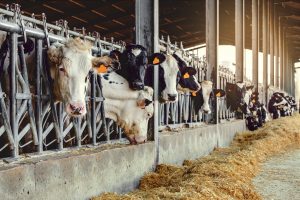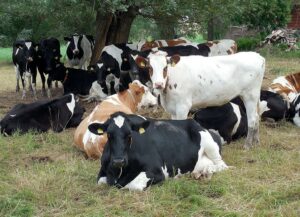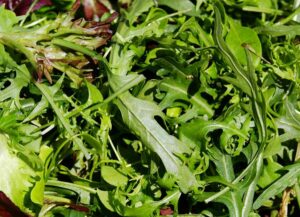Alvaro Garcia
Adequate rumen papillae growth is indispensable to maximize the absorption of volatile fatty acids (VFA) in ruminants. In wild African ruminants for example, there is a change in papillae growth and epithelial intestinal growth between the dry and rainy seasons which results from the quality and abundance of the forage available.
Something similar happens when dry cows are fed low quality, highly fibrous forages that do not stimulate the production of VFA that are critical for papillae development. Similarly, in the pre-weaned ruminant, early development of these epithelial structures allows them to accelerate the transition to a ruminant with a functional rumen, thus reducing feed costs.
Recent research has demonstrated that high dietary fiber (NDF) to starch ratios negatively affect the expression of the gene regulating growth of papillae. The right ratio of volatile fatty acids in the diet then determines how much of those volatile fatty acids will be absorbed, and how much energy the cow will obtain from its feed!
Metabolic pathway of the butyrate synthesized in the rumen of lactating cows
Lipogenesis is the result of metabolic steps to synthesize of fatty acids and then triglycerides. The major locations in the body varies somewhat but it generally takes place in the intestinal mucosal cells, the liver, the adipose tissue and the mammary gland in lactating animals.
The intestinal mucosal cells of the epithelium utilize the fatty acids absorbed from the diet. Liver, adipose tissue, and mammary gland conduct de novo synthesis of fatty acids, using an acetyl-coA molecule derived from dietary carbohydrates and amino acids to a lesser extent.
In the lactating cow the predominant site for lipogenesis is the adipose tissue. The fermentation of carbohydrates in the rumen yield acetate, propionate and butyrate. The liver metabolism handles glucose synthesis whereas acetate is the main lipogenic precursor for the adipose tissue and the mammary gland during lactation.
Butyrate is used for de novo synthesis of fatty acids in the mammary gland and as a result it should increase milk fat production. Research has also found a positive correlation between increasing bulk tank fat and protein tests with increasing de novo fatty acid content in milk. Factors other than the diet composition that enhance de novo fatty acid and higher milk protein synthesis have been identified by Cornell researchers (i.e. bunk space and less pen stocking density).
The intensity of de novo fatty acid synthesis seems to indicate rumen health and adequate rumen function. Taking this into consideration it would be logical to expect that butyric acid supplementation could promote milk fat synthesis and reduce milk fat depression in cows fed more concentrate. Results of these experiments have been inconsistent showing no effect, milk fat increases, and even negative effects!
Does the concentration of milk fat increase in dairy cows supplemented with butyrate?
A recent experiment (Izumi et al. 2019) evaluated the effects of butyrate supplementation on dry matter intake, milk production, and blood metabolites of lactating dairy cows fed diets containing different starch concentration. Holstein cows after peak lactation (58.6 ± 9.96 days in milk; mean ± SD) weighing 620 kg and producing at least 34 kg/day of milk with 3.9% fat and 3.2% protein were blocked by parity and assigned to 1 of 2 Latin squares (4 × 4) in a 2 × 2 factorial.
Diets had two dietary starch concentrations (20.6 and 27.5% dry matter; DM) and butyrate supplementation (butyrate and control) with 21-day periods with 16 days allowed for adaptation and 5 for data collection. Low and high starch diets contained (DM basis) 36 and 30% corn silage, 18 and 15% grass silage, and 46 and 55% concentrate.
The butyrate product used contained 70% sodium butyrate and 30% fatty acid mixture and was fed at 2% of the dietary DM (providing butyrate at 1.1% of dietary DM); the control premix contained 70% wheat bran and 30% fatty acid mixture. All diets were formulated for similar protein concentrations and fed individually as a TMR allowing for 8% refusals.
Butyrate-supplemented cows had higher serum β-hydroxybutyrate concentration compared with controls (0.706 vs. 0.930 mM), without reaching however the concentration indicative of subclinical ketosis (1.2 mM). There were no differences in DM intake between butyrate supplemented and un-supplemented cows, although cows in high starch diets tended to eat more.
The cows that received butyrate supplementation had higher milk fat concentration (4.58 vs. 4.37%) and milk fat yield (1.51 vs. 1.42 kg/day), and tended to have increased 4% fat-corrected milk yield (35.9 vs. 34.3 kg/day) and feed efficiency (1.56 vs. 1.50; 4% fat corrected milk yield/dry matter intake). They also had decreased milk urea nitrogen concentration (10.8 vs. 11.7 mg/dL) compared to the un-supplemented cows.
Cows in high starch diets tended to eat more (23.3 vs. 22.5 kg/d), have higher milk protein yield (1.13 vs. 1.05 kg/d), and lower milk urea nitrogen (10.3 vs. 12.2 mg/dL). Butyrate supplemented at 1.1% of the dietary DM increased milk fat and decreased milk urea nitrogen concentration without affecting DM intake or increasing the risk of subclinical ketosis, regardless of dietary starch.
Results of this experiment show that supplementing butyrate at 1.1% of the DM can increase milk fat, regardless of the starch concentration in the diet. It also showed that dry matter intake was not affected, and there was no increased risk of subclinical acidosis.
Butyrate supplementation was also effective in reducing milk urea nitrogen without affecting milk protein yield. These results merit more research since they could lead to milk with characteristics valued for dairy products processing.
References
K. Izumi, R. Fukumori, S. Oikawa, M. Oba. Short communication: Effects of butyrate supplementation on the productivity of lactating dairy cows fed diets differing in starch content. J. Dairy Sci. 2019. 102 (12): 11051-11056.
R. Fukumori, M. Oba, K. Izumi, M. Otsuka, K. Suzuki, S. Gondaira, H. Higuchi, S. Oikawa. Effects of Butyrate Supplementation on Blood Glucagon-Like peptide-2 Concentration and Gastrointestinal Functions of Lactating Dairy Cows Fed Diets Differing in Starch Content. J. Dairy Sci. 2020 Apr;103(4):3656-3667.
© 2020 Dairy Knowledge Center. All Rights Reserved.







